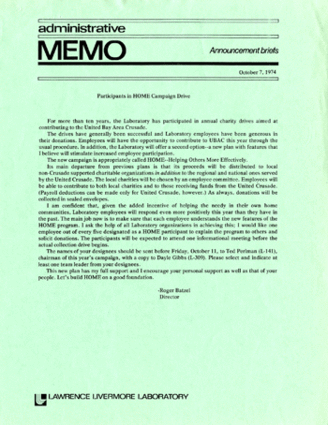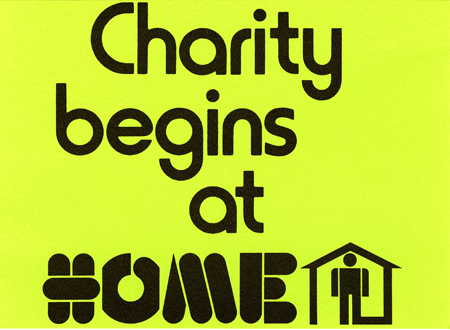The genesis of the HOME Campaign
Editor's note: This monthly feature is brought to you by the Laboratory's Archives and Research Center.
Although the HOME Campaign began in 1974, Lab employees had participated in some form of fund drive since the Lab opened in 1952. The United Bay Area Crusade (UBAC) drive in 1959 collected contributions totaling some $6,000. By 1973, total contributions to the UBAC were $58,000.
In that year, campaign organizers, headed by Hank McDonald met with Sue Steinberg, "a young woman active in volunteer charity work in Livermore," who asked that the Lab support local organizations. The purpose of the UBAC had been to "get the money from a fairly comfortable suburban area to the urban ‘problem areas’ where massive assistance is needed."
Steinberg made a strong argument for local community needs, among them: Valley problems exist but are simply less visible; small sums given to local organizations could make a major difference; and Lab personnel would be more likely to support local causes. McDonald and the fund drive committee decided that including local organizations was "indeed a better way to go," and planning started for the first HOME Campaign in early 1974.
One of the tasks outlined for the Lab committee was to "choose a catchy name." LECAP (Livermore Employees’ Community Assistance Plan) was proposed, but by August 1974, HOME (Helping Others More Effectively) was the selected name. ( See memo dated Oct. 7, 1974 ). That year the campaign totaled more than $70,000 and increased steadily each year, passing the $1 million mark in 1998.






